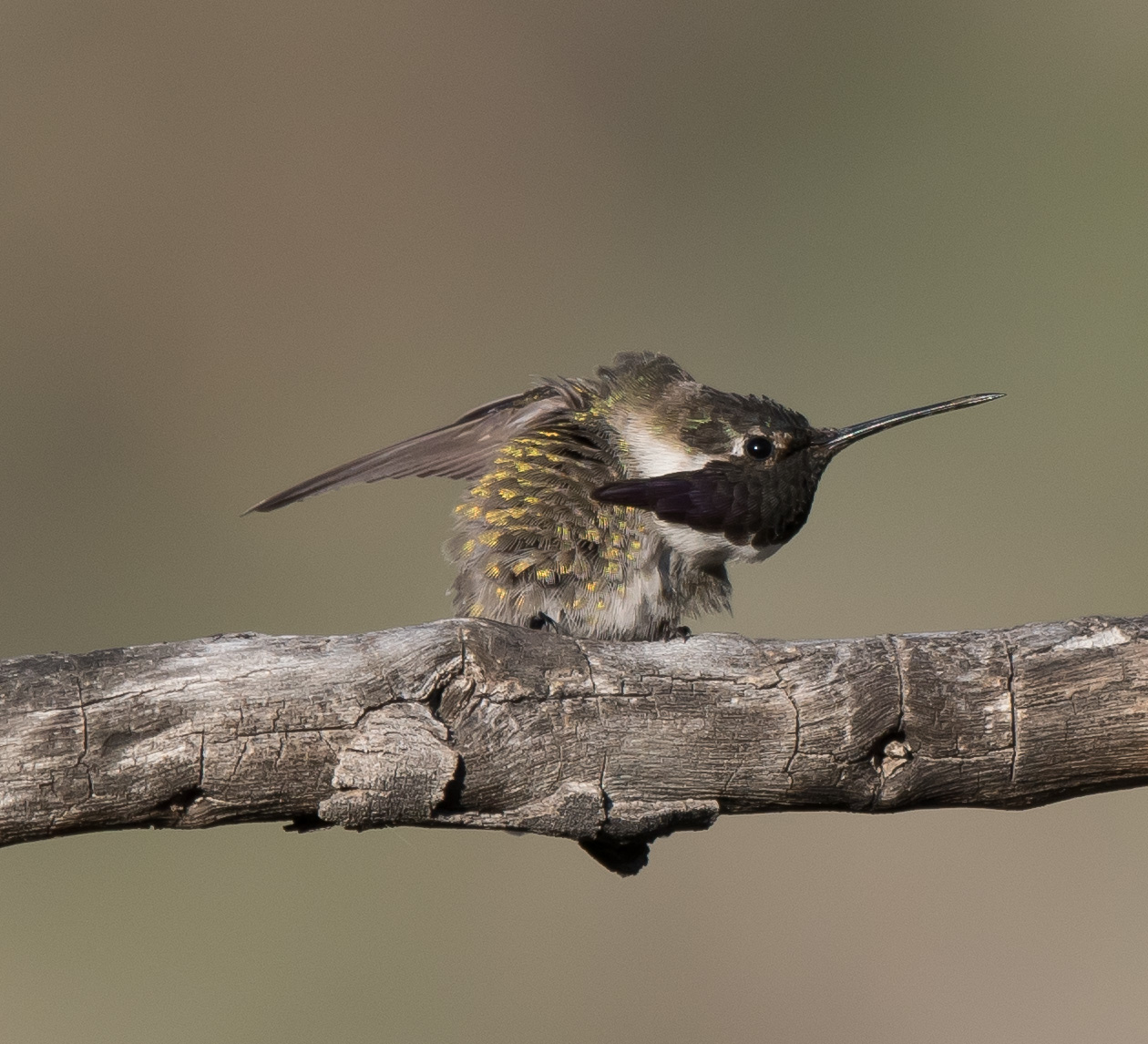Southeast Arizona most generally gets all the attention for the best birding in Arizona and rightfully so. After all, that area is located near to the border with Mexico, and it is expected that some of these Mexican specialties wander north over the border and into Arizona. But at the other end of the spectrum, Maricopa County which is further north, has its share of some pretty awesome birds. It does get its share of northward wandering Mexican birds as well, just not as regular as southeastern Arizona. The county also gets some pretty amazing northern and eastern migrants that can whet the appetite of many birders.
Recently, I was invited to join Barb Meding and Jeanne Burns to head a little ways north of town of Carefree and look for Grasshopper Sparrows which had recently been reported by a team of birders participating in a CBC (Christmas Bird Count). We had decided to make a day of it and explore various other locations in the vicinity as well. First was the search for Grasshopper Sparrow in the desert grasslands and we found them (at least 4). This is a bird that is not too commonly found in Maricopa County, and we had to endure looking at a lot of White-crowned Sparrows to find these rather cool and interesting sparrows.
Grasshopper Sparrow
Grasshopper Sparrow - backside
2 Grasshopper Sparrows
Rufous-crowned Sparrows and a Sage Thrasher also rounded out this area along the recently paved road.
Rufous-crowned Sparrow
Sage Thrasher
Next stop was the Seven Springs Campground area. We arrived to find a wedding had been scheduled for the campground, so we did not have a lot of time to explore, but we were able to find Cassin's Finches feeding on the many Juniper berries.
Cassin's Finch - Male, munching on juniper berries
Cassin's Finch - Female, also feeding on juniper berries
Our final stop on the way back to civilization was Lower Camp Creek. We had seen reports of a Louisiana Waterthrush and a Golden-crowned Kinglet from that location, so those were our target birds. The kinglet was actually quite easy to hear and it showed itself well. It is rare for this species in these lower elevations, but this year seems to be a bit of an irruption year for it. It can be notoriously hard to get photos of this bird, and this one offered me the best views ever for this species.
Golden-crowned Kinglet
Took a bit longer to locate the Louisiana Waterthrush. We could hear it giving its single note 'chick' call, but getting on it was a bit tough. And it got tougher as I happened to spy a Pacific Wren down near the water, which had not been reported and it too, is a hard bird to find in Arizona due to their secretive habits. It is always fun to find an uncommon bird to add to the list for others to locate.
Pacific WrenWren
After getting over the distraction of finding the Pacific Wren, we were able to finally get some views of the Louisiana Waterthrush. They can often be confused with the Northern Waterthrush, but one of the key identifications is the white supercillium, or eye-brow. These photos show how wide it is all the way back behind the eye towards the nape of the neck. Northern Waterthrush has a similar marking, but it tapers to a very thin line in the rear. This is a species I had only had seen very well once before. This sighting is great as it provides a learning experience for me.
Lousiana Waterthrush
A couple more birds we saw at this location was a Hutton's Vireo and another Sage Thrasher. Both species are always great to see.
Hutton's Vireo
Another Sage Thrasher
What a great day of birding with a couple of really good friends, so I was in good company. Finding the Pacific Wren was really great so we could add to the list of uncommon birds at this location. Several other birders have chased the Pacific Wren since our report and found it, so you know it is a desirable bird. Maricopa County really has some great birding of its own and birders need to take note that not all special birds are found in southeastern Arizona.























No comments:
Post a Comment